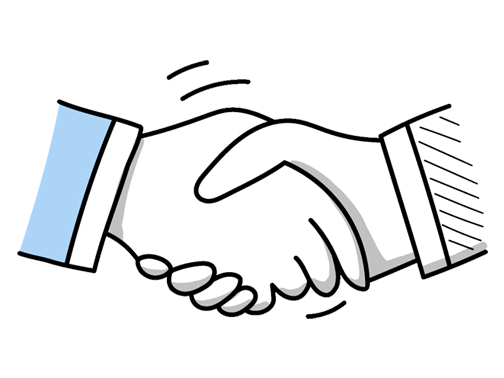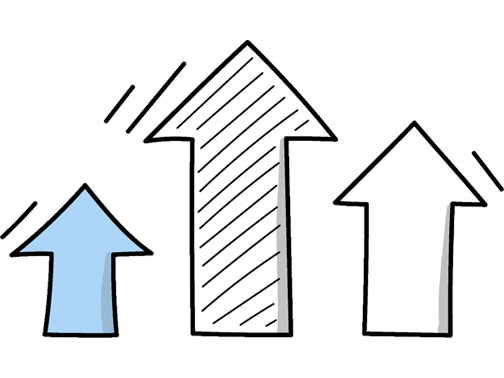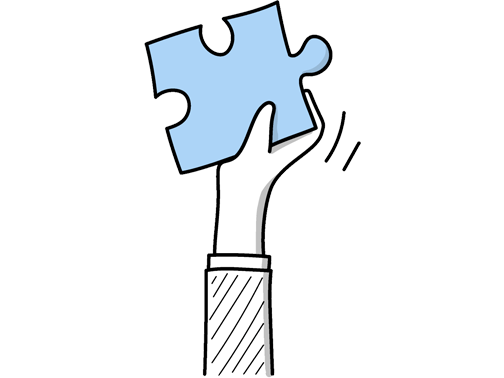HR Analyst Interview Questions (2025 Guide)
Find out common HR Analyst questions, how to answer, and tips for your next job interview
Practice Interviews Online - Identify your strengths and weakness in a realistic HR Analyst mock interview, under 10 minutes
Practice Now »HR Analyst Interview Questions
What they want to see is your ability to handle sensitive situations with empathy and clarity while maintaining professionalism. You should explain how you planned the conversation, communicated the message compassionately, and supported the employee afterward to ensure a positive outcome.
Example: In a previous role, I needed to inform an employee about a performance concern. I calmly outlined the issues, listened to their perspective, and acknowledged their feelings. Beforehand, I prepared by reviewing their recent work and potential support options. After our conversation, I followed up with resources and a clear plan to help them improve, ensuring they felt supported rather than discouraged throughout the process.
Interviewers ask this question to see how you apply data-driven thinking to enhance HR functions and make informed decisions. You should explain which HR processes you’d analyze, how you’d gather and examine relevant data, and how you’d use insights to recommend practical improvements.
Example: When looking to enhance HR processes, I start by pinpointing areas like recruitment or employee engagement where data can highlight trends. Gathering relevant data—say, time-to-hire or turnover rates—allows me to uncover patterns. From there, insights might reveal bottlenecks or satisfaction gaps, guiding targeted actions like refining job postings or introducing feedback initiatives to improve overall effectiveness and employee experience.
Hiring managers ask this question to see how you approach problem-solving and use data to improve HR outcomes. You should explain that you would identify the root causes of turnover through surveys and exit interviews, implement targeted engagement strategies based on that data, and then track turnover rates to measure success.
Example: If I were to tackle reducing employee turnover, I’d start by digging into exit interviews and employee feedback to understand why people leave. From there, I’d work with managers to create tailored initiatives—like career development or recognition programs—that address those specific issues. Keeping a close eye on turnover trends and regularly checking in with staff helps ensure these efforts really make a difference over time.
What they want to understand is how you make complex HR policies clear and accessible to others, ensuring smooth implementation and compliance. You need to explain the policy background, describe how you simplified it with tools like visuals or examples, and highlight the positive outcomes from your communication efforts.
Example: In a previous role, I needed to explain a new, detailed flexible working policy to a diverse team. I broke it down into straightforward terms and created a clear summary with visuals. This approach made it easier for everyone to understand their options, which boosted engagement and reduced confusion. Feedback showed the team felt more confident and supported, making the policy rollout much smoother.
Questions like this assess your ability to work effectively with others and contribute to team success. You need to describe the situation clearly, explain your role in the team, and highlight how your collaboration helped achieve the goal.
Example: In a previous role, I worked closely with the recruitment and payroll teams to streamline our onboarding process. By regularly sharing data insights and listening to their challenges, we identified key bottlenecks and implemented changes that reduced processing time by 20%. It was rewarding to see how open communication and teamwork directly improved the experience for new hires and made everyone's work more efficient.
Employers ask this to gauge your attention to detail and understanding of reliable data management in HR. You need to explain that you regularly audit data, use validation checks, and follow standardized processes to maintain accuracy and integrity.
Example: Ensuring data accuracy starts with clear processes and regular reviews. I focus on consistent data entry standards and collaborate closely with HR and IT teams to catch discrepancies early. For example, implementing routine audits helps identify errors before they impact reporting. Keeping open communication channels also means any updates or corrections are quickly addressed, maintaining trust in our HR systems and supporting better decision-making.
What they want to know is how you prioritize confidentiality, empathy, and proper protocol to ensure the issue is addressed fairly and legally. You need to say that you would listen carefully, document the complaint, maintain confidentiality, and follow company policies to investigate and resolve the issue appropriately.
Example: If an employee comes forward with a serious complaint, I would first listen carefully and ensure they feel heard. Then, I’d explain the next steps clearly, maintaining confidentiality throughout. For example, in a previous role, I guided the employee through our formal process while offering support. Keeping communication open and fair helps build trust and leads to a resolution that respects everyone involved.
This question aims to assess your ability to use data to drive meaningful HR improvements. You need to explain how you gathered and analyzed relevant data and then clearly describe the resulting change in HR policy or practice that your insights informed.
Example: In a previous role, I noticed rising turnover rates, so I collected exit interview data and analysed trends. This revealed that lack of career development was a key factor. Sharing these insights, we introduced clearer progression pathways, which improved retention over the following year. It showed me how data can pinpoint real issues and guide meaningful changes in HR practices.
Questions like this assess your ability to adapt communication to effectively convey information across various organizational levels. You need to say that you adjust your language and detail based on the audience’s expertise and priorities, ensuring clarity and relevance.
Example: When communicating with senior management, I focus on clear, concise insights, highlighting key data that supports decision-making. With middle management, I provide more detailed analysis and actionable recommendations to help them implement strategies effectively. For team members, I keep explanations straightforward and open to questions, ensuring everyone understands the impact and next steps. Adapting tone and detail helps build trust and ensures the message resonates at every level.
This interview question aims to assess your conflict resolution skills and ability to maintain a productive team environment. You need to explain the situation briefly, describe your approach to understanding both sides, and highlight how you facilitated a solution that benefited the team.
Example: Yes, I have. In one case, two colleagues had differing views on project priorities, which slowed progress. I spoke with each separately to understand their perspectives, then facilitated a calm discussion where we aligned on common goals. By focusing on shared objectives rather than personal differences, we found a solution everyone could support, and the team moved forward more collaboratively.
Questions like this assess your ability to foster clear and inclusive communication, crucial for teamwork and productivity. You need to explain how you establish regular meetings and updates, encourage open dialogue so everyone feels heard, and adapt your communication style to match each team member’s needs.
Example: To keep communication smooth in my team, I set up straightforward ways to share updates and encourage everyone to contribute, making sure all voices are heard. I also pay attention to how individuals prefer to communicate—whether that’s through quick chats, emails, or meetings—and adapt accordingly. For example, one team member appreciates detailed emails, while another prefers brief calls, so I adjust to help everyone stay engaged and informed.
This question aims to assess your attention to detail and reliability in handling HR data. You need to say that you verify data sources by cross-checking multiple datasets, use automated tools to detect errors, and consistently review your assumptions to minimize bias.
Example: To ensure accuracy, I start by confirming the reliability of my data sources and cross-referencing key figures with multiple reports. I use tools like Excel’s data validation and pivot tables to spot inconsistencies early. I also question any assumptions behind the analysis, testing different scenarios to see if results hold up. For example, reviewing employee turnover trends against industry benchmarks helped me catch a data entry issue once.
Questions like this assess your ability to identify process inefficiencies and propose practical improvements. You need to highlight specific pain points in onboarding and suggest clear, actionable changes that enhance employee experience and operational efficiency.
Example: To enhance onboarding, I’d suggest making the process more personalised and interactive. For example, pairing new hires with a buddy can help them settle in quickly. Also, breaking down information into manageable chunks rather than overwhelming them on day one makes a big difference. Regular check-ins during the first few weeks can ensure they feel supported and any concerns are addressed promptly. This approach fosters engagement and confidence from the start.
Questions like this assess your ability to use data to drive HR decisions and demonstrate your analytical skills. You need to briefly describe specific HR metrics you've worked with and how you used reporting to influence outcomes or improve processes.
Example: In my previous role, I regularly analysed employee turnover and engagement data to identify trends and support strategic decisions. I created clear reports for management, highlighting key insights that helped improve retention rates. Working closely with HR and finance teams, I ensured our metrics were accurate and actionable, which ultimately enhanced workforce planning and overall organisational performance.
This interview question helps assess your ability to leverage data in addressing challenging HR issues, showing your analytical and problem-solving skills. You need to briefly describe the problem you identified using data, explain the analytical methods you applied, and highlight the positive impact your solution had on the organization.
Example: In a previous role, I noticed high turnover rates in a specific department. By analyzing exit interviews and performance data, I identified patterns linked to management styles and workload. Using this insight, we tailored leadership training and adjusted team structures, which led to a noticeable drop in turnover within six months. It showed me how clear data can reveal underlying issues and guide targeted, effective HR actions.
Employers ask this to see how you focus on impactful data that drives decisions and improves HR outcomes. You should say you prioritize metrics based on alignment with business goals, data reliability, and potential to influence strategic actions.
Example: When deciding which HR metrics to focus on, I start by aligning them with the company’s current goals—whether that’s improving retention or boosting employee engagement. I also consider what provides the clearest insight for leaders to make informed decisions. For example, if turnover is high, I’ll prioritize analyzing exit data to identify patterns and suggest solutions. It’s about balancing relevance with actionable value.
Questions like this assess your interpersonal skills and ability to manage conflict professionally. You need to describe the situation clearly, explain how you handled it calmly and fairly, and highlight the positive result or lesson learned.
Example: In a previous role, I addressed a team member struggling with meeting deadlines. I scheduled a one-on-one to understand the root causes, discovering they felt overwhelmed by unclear priorities. Together, we reorganised their tasks and set achievable goals, which improved their performance and morale. This experience reinforced the importance of empathy and clear communication in resolving workplace challenges effectively.
Questions like this assess your ability to translate complex HR data into understandable insights for diverse audiences. You need to emphasize using simple language, visual aids, and focusing on key takeaways to make data accessible and relevant to non-HR stakeholders.
Example: When presenting HR data to non-HR stakeholders, I focus on storytelling—breaking down complex figures into relatable insights. I use clear visuals and avoid jargon, ensuring the key message stands out. For example, instead of just showing turnover rates, I highlight what it means for team stability and project continuity. This helps keep the conversation grounded and actionable, making the data relevant to their priorities.
Hiring managers ask this question to see how you handle change and whether you can quickly adapt without losing effectiveness. In your answer, briefly describe the change, how you assessed it, and the proactive steps you took to adjust while staying productive and positive.
Example: In a previous role, our company shifted to a new HR system with little notice. I quickly familiarised myself with the platform, adjusted reporting methods, and supported colleagues through the transition. Staying open-minded helped me embrace the change rather than resist it, which made the process smoother for the whole team and ensured our data remained accurate during a busy period.
This interview question is designed to assess your ability to handle stress and maintain productivity in challenging situations. You need to describe a specific example, explain the steps you took to stay calm and organized, and highlight the positive outcome of your actions.
Example: In my previous role, I had to deliver a comprehensive report on short notice during a busy period. I stayed focused by breaking the task into smaller parts and prioritising key data first. Keeping calm and communicating clearly with my team helped ensure accuracy without delay. It taught me that organising priorities and maintaining steady communication are essential when deadlines loom.
Employers ask this question to assess your familiarity with payroll operations and accuracy in handling sensitive employee data. You need to briefly explain the payroll systems you have used and highlight your role in ensuring timely, error-free salary processing.
Example: In my previous role, I regularly worked with payroll systems, ensuring accuracy in employee data and timely salary processing. I collaborated closely with finance to resolve discrepancies and helped streamline reporting by automating routine tasks. For example, I identified and corrected input errors that prevented delayed payments, which improved overall efficiency and employee satisfaction. This experience gave me a clear understanding of how payroll integrates with broader HR functions.
This question assesses your practical experience with HR tools and your ability to leverage technology to improve HR processes. You need to mention specific software you’ve used and briefly explain how you applied it to manage tasks or improve efficiency.
Example: In my previous roles, I’ve used systems like Workday and BambooHR to manage employee records, track recruitment progress, and generate reports. I found these tools really helpful for streamlining data and improving accuracy in workforce planning. For example, using Workday’s analytics, I was able to identify trends in turnover that helped our team adjust retention strategies effectively.
This interview question is designed to assess your ability to plan, communicate, and manage change effectively during important HR projects. You should explain that you would create a clear implementation plan with defined phases and timelines, keep everyone informed about the changes and benefits, and continuously monitor progress to quickly resolve any issues.
Example: When introducing new HR software, I’d start by mapping out each step clearly to ensure everyone knows what to expect. Keeping open lines of communication helps address any concerns early on — for example, regular check-ins with team members make a big difference. I’d also track how things are progressing closely, ready to tackle any issues as they come, so the transition feels smooth and supports everyone’s daily work.
What they want to know is how you methodically handle HR data to find useful patterns that support business decisions. You should explain that you first gather and organize relevant data systematically, analyze it to detect trends such as turnover spikes, and then clearly communicate these insights through reports or dashboards to guide HR strategies.
Example: When analyzing HR data, I start by gathering clean, relevant information from different sources to ensure accuracy. I then look for patterns, such as turnover rates or engagement shifts, that reveal underlying issues or opportunities. Once I have clear insights, I present them in a straightforward way that helps the team make informed decisions—like adjusting recruitment strategies or improving employee well-being initiatives.
Hiring managers rely on accurate HR data to make informed decisions, so identifying and addressing discrepancies is crucial to maintain trust and data integrity. You need to explain that you would first verify the data, investigate the source of the discrepancy, and then communicate findings clearly to the relevant stakeholders while recommending corrective actions.
Example: If I noticed a discrepancy in HR data, I would first verify the information to understand the scope. Then, I’d consult with relevant teams, like payroll or recruitment, to identify the source. It’s important to address it promptly to maintain accuracy and trust. For example, once I spotted inconsistent leave records and worked with the team to correct the system, preventing future errors.
Ace your next HR Analyst interview with even more questions and answers
Common Interview Questions To Expect
The interviewer is looking to see if the candidate has done their research on the company and is genuinely interested in the position. Possible answers could include through a job board, company website, referral, or networking event.
Example: I actually came across this position on a job board while I was actively looking for HR opportunities. I did some research on the company and was really impressed with your values and culture. I knew I had to apply and be a part of such a great team.
The interviewer is looking for you to highlight your key skills, abilities, and qualities that make you a strong candidate for the HR Analyst role. Be sure to provide specific examples to support your strengths.
Example: I would say my biggest strengths are my strong analytical skills, attention to detail, and ability to communicate effectively with others. For example, in my previous role, I was able to analyze data to identify trends and make recommendations for improving employee engagement. Additionally, I have a proven track record of successfully managing multiple projects simultaneously.
The interviewer is looking for your ability to handle constructive criticism, reflect on feedback, and demonstrate growth and improvement in response to challenges.
Example: Sure! In my previous role as an HR Analyst, I received feedback from my manager about the way I was presenting data in reports. Instead of getting defensive, I took the feedback on board and worked on improving my data visualization skills. As a result, my reports became more visually appealing and easier to understand for stakeholders.
The interviewer is looking for a candidate who has done their research on the company, understands its values, mission, products/services, and recent news or achievements. The answer should demonstrate knowledge and interest in the company.
Example: I know that your company is a leading provider of innovative HR solutions in the UK market. I've read about your commitment to promoting diversity and inclusion in the workplace, which aligns with my own values. I'm also impressed by your recent partnership with a major tech company to enhance your software offerings.
The interviewer is looking for honesty, professionalism, and a valid reason for leaving the previous job. Possible answers could include seeking career growth, better opportunities, or a change in work environment.
Example: I left my last job because I felt like I had reached a plateau in terms of career growth and I was looking for new opportunities to challenge myself. I wanted to explore different work environments and expand my skill set in HR analysis.
Company Research Tips
The company's official website is a goldmine of information. Look for details about the company's history, mission, vision, and values. Pay special attention to the 'About Us', 'Our Team', and 'News' or 'Blog' sections. These can provide insights into the company culture, recent achievements, and future plans. For the HR Analyst role, focus on the HR-related initiatives and policies of the company.
Tip: Look for any recent news or updates about the company. This can be a great conversation starter during the interview.
LinkedIn can provide valuable insights about the company and its employees. Check the company's LinkedIn page for updates and posts. Look at the profiles of current and former employees, especially those in HR roles. This can give you an idea of the skills and experience the company values. You can also see if the company has any notable achievements or awards.
Tip: Use LinkedIn's 'Alumni' tool to find people who have worked at the company and are in your network. They might be able to provide insider information.
Glassdoor is a platform where employees and former employees anonymously review companies. You can find information about the company culture, salary, benefits, and interview process. For the HR Analyst role, pay attention to reviews about the HR department and how the company treats its employees.
Tip: Take the reviews with a grain of salt. People are more likely to leave reviews when they are unhappy, so the reviews might be skewed towards the negative.
Understanding the industry the company operates in can give you a competitive edge. Look for industry trends, challenges, and opportunities. This can help you understand the company's position in the market and how it might be affected by external factors. For the HR Analyst role, focus on HR trends and challenges in the industry.
Tip: Use reputable sources for your research, such as industry reports, news articles, and professional associations.
What to wear to an HR Analyst interview
- Dark-colored business suit
- White or light-colored shirt
- Conservative tie for men
- Closed-toe shoes, polished
- Minimal jewelry
- Neat, professional hairstyle
- Light makeup for women
- Clean, trimmed nails
- No strong perfumes or colognes
- Carry a briefcase or portfolio





